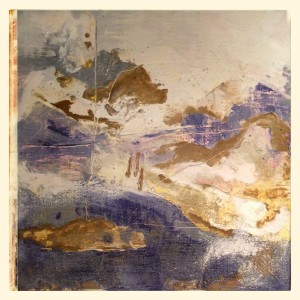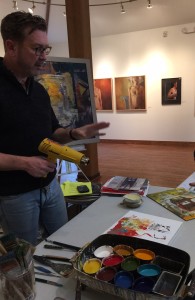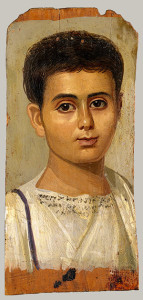
On Friday, February 13th I got to be an art student again! It was exhilarating and inspiring. I participated in a workshop run by artist Dale Roberts at the Community Arts Center in Wallingford, PA. Dale is an accomplished encaustic painter. He graciously shared his expertise with me and my colleagues by showing us the ins and outs of painting with hot wax. Encaustic literally means burning in so to paint using this method requires heat by way of a heat gun and an electric frying pan both of which you can see in the photo below.

Working with this medium is quite challenging. In order for the pigments to stay liquid, they must remain on a heated surface (the electric frying pan). Once the pigments make their way to a paintbrush and onto a sturdy surface, they harden as wax. In order to move the pigment around like paint, one must apply more heat (cue the heat gun). Due to the organic nature of this process, the outcome is completely unpredictable although experts like Dale seem to have an innate understanding of how to command this medium.
Lest you think encaustic is a newer type of medium, it dates far back to ancient Egypt. Just check out the Metropolitan Museum of Art’s website:

Roman period, 2nd century
Egyptian
“Paintings of this type, often called Faiyum portraits (although not all of them come from the Faiyum oasis), are typical products of the multicultural, multiethnic society of Roman Egypt. Most of them are painted in the elaborate encaustic technique, in which pigments were mixed with hot or cold beeswax and other ingredients. This manner of painting, which is very different from the traditional Egyptian style but was well known in Ptolemaic Egypt, originated in Classical Greece in the fifth and fourth centuries B.C.”